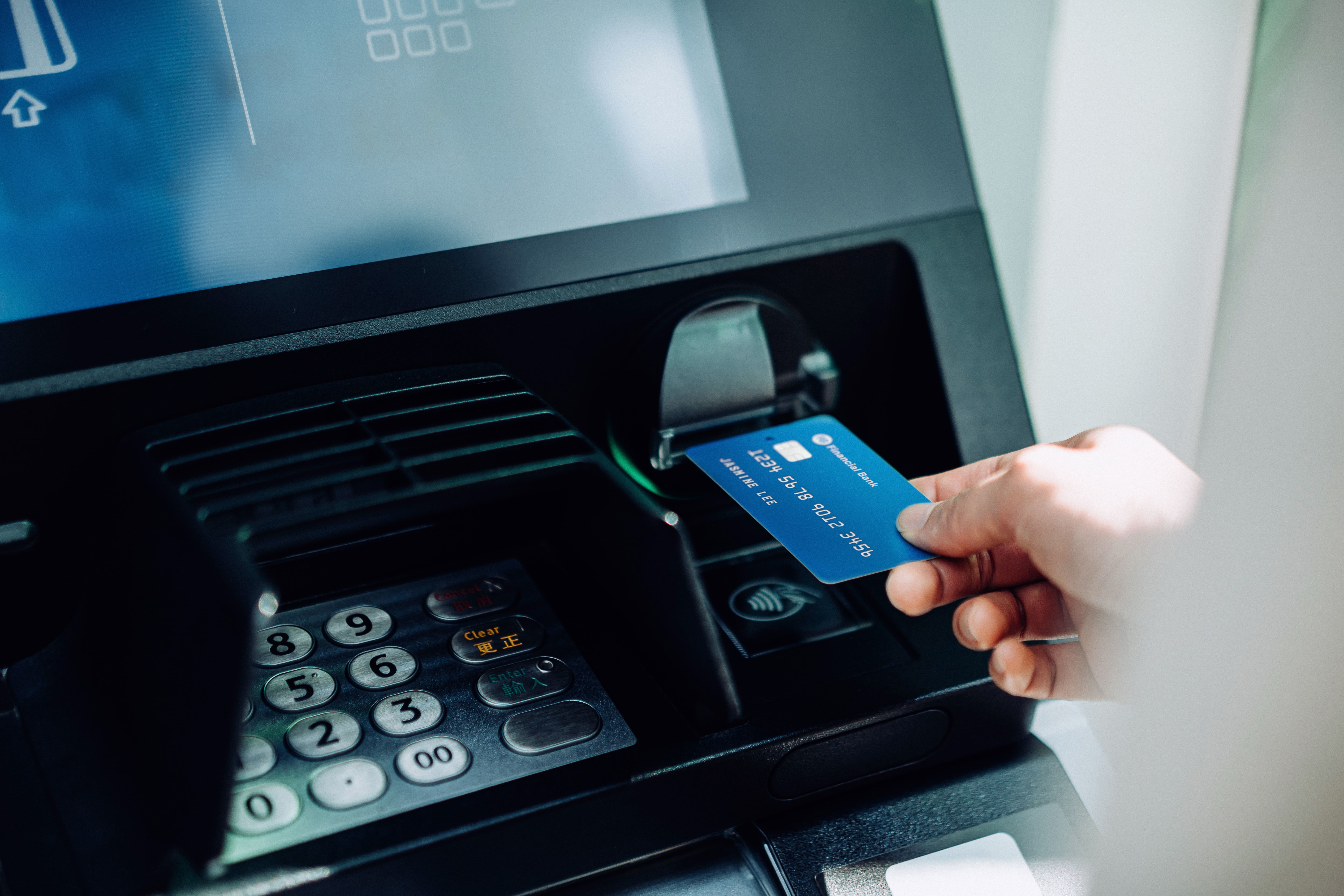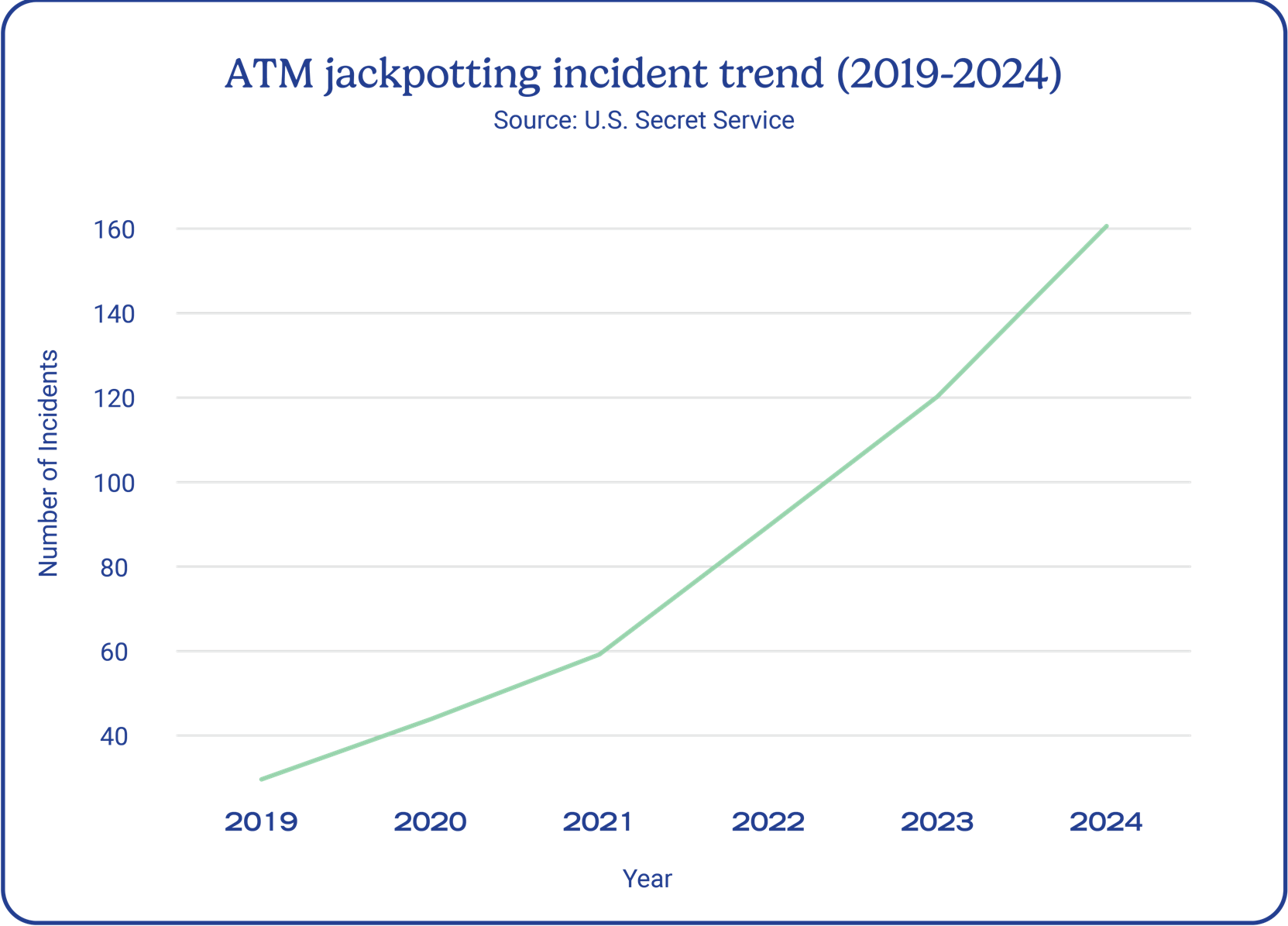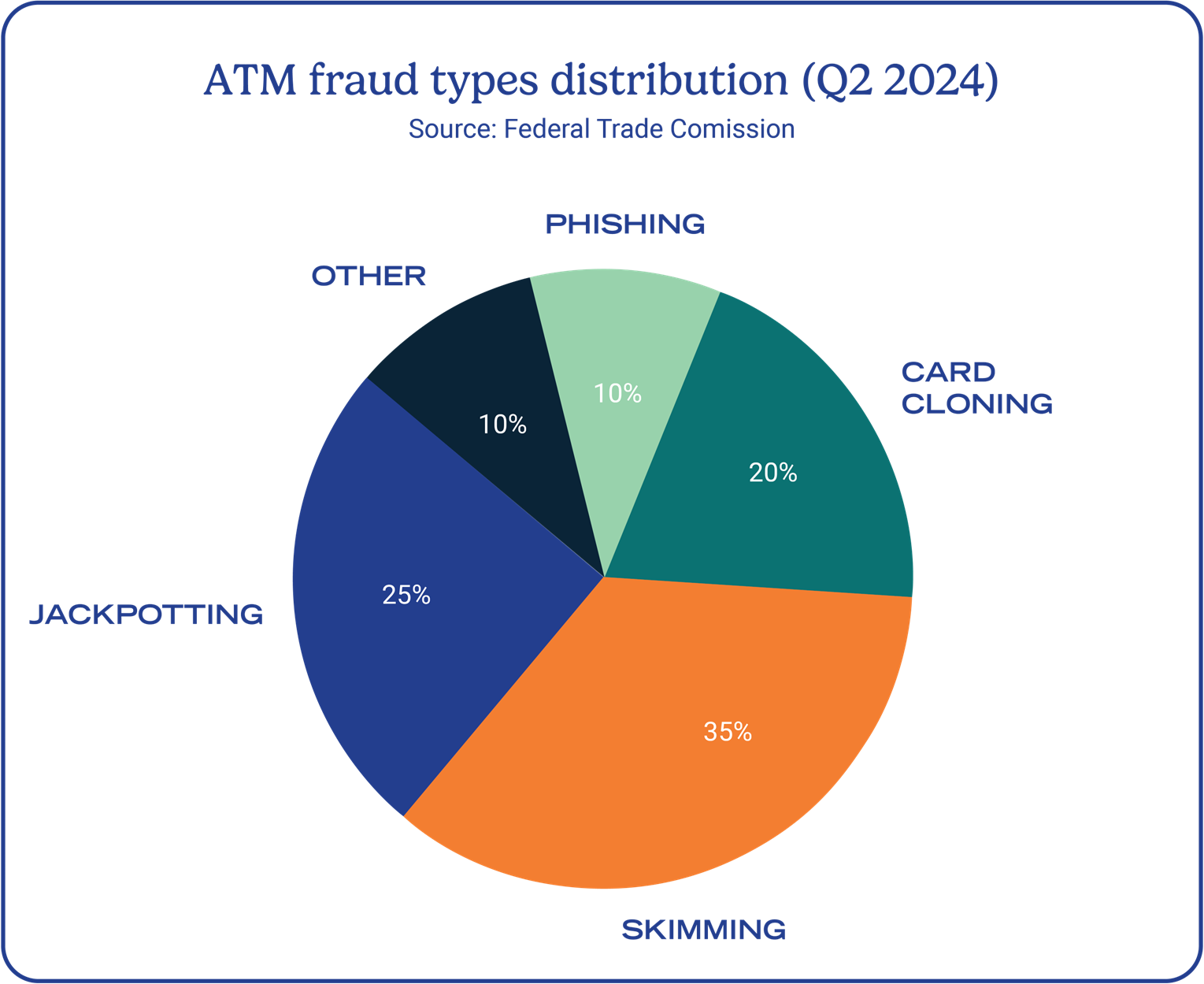search for solutions by category, industries, insights, and people.


Financial institutions across North Carolina are once again on high alert following a resurgence of ATM "jackpotting" attacks, where criminals manipulate machines to dispense large sums of cash. The North Carolina Bankers Association (NCBA) recently issued a renewed warning after a spike in incidents targeting standalone ATMs in the Piedmont region.
While the recent surge in ATM jackpotting incidents is currently concentrated in North Carolina, we believe it's critical to alert financial institutions nationwide. Criminals are moving fast, adapting quickly, and leveraging new technologies to strike wherever vulnerabilities exist.
Jackpotting is a form of cyber-physical crime in which attackers gain unauthorized access to an ATM’s internal systems and force it to dispense cash on command. These attacks are typically carried out by organized criminal groups using advanced tools and techniques, such as:
Recent cases have involved the use of master keys, often sold on the dark web, to access older ATM models still equipped with factory-installed locks. The attacks frequently occur during weekends or overnight hours when surveillance and staffing are minimal. Perpetrators often wear masks and gloves to avoid identification.

ATM fraud is not limited to North Carolina. It is part of a broader trend of escalating ATM-related fraud across the U.S. and globally:
Globally, ATM jackpotting has been a concern since at least 2010, when the first known attacks were reported in Europe. The U.S. saw its first confirmed cases in 2018, and the threat has steadily grown with the proliferation of off-the-shelf hacking tools and insider knowledge.

In response to the growing threat, the NCBA and cybersecurity experts recommend that financial institutions implement the following best practices:
ATM jackpotting is a fast-moving and high-impact threat that can drain multiple machines in a matter of hours. Financial institutions, especially those operating older or standalone ATMs, should work closely with ATM vendors, cybersecurity consultants, and law enforcement to strengthen defenses. Best practices include:
To reduce the risk of ATM jackpotting and related frauds, internal audits should be comprehensive and tailored to detect both technical and procedural vulnerabilities. These may include:
As ATM jackpotting techniques become more sophisticated and accessible, financial institutions should treat ATM security as a constantly shifting challenge that demands vigilance, investment, and collaboration across banking and cybersecurity.
Elliott Davis offers a full suite of audit and advisory services tailored to the financial sector, including:
Our team works closely with banks and credit unions to identify vulnerabilities, strengthen controls, and support a proactive security posture. If your institution is looking to assess its current defenses or prepare for future threats, contact us today.
The information provided in this communication is of a general nature and should not be considered professional advice. You should not act upon the information provided without obtaining specific professional advice. The information above is subject to change.